Labels for Safety, Visuals and Facility ID Desktop Printers
Labels for Product, Wire and Lab ID Benchtop Printers
Labels for Safety, Visuals and Facility ID Desktop Printers
Labels for Product, Wire and Lab ID Benchtop Printers
Safety and Facility ID Desktop Printers
Product, Wire and Lab ID Benchtop Printers
Barcode Scanner and Printer Kits
Barcode Scanner and Printer Kits
PaintStripe Floor Marking Stencils
Valve Lockouts & Hose Lockouts
Group Lock Boxes & Permit Control
Brady Safety Lockout Tagout Services
Pipe Marker Accessories & Mounting Brackets
Maintenance and Production Tags
Calculators and Assessment Tools
Product Finders and Data Sheets
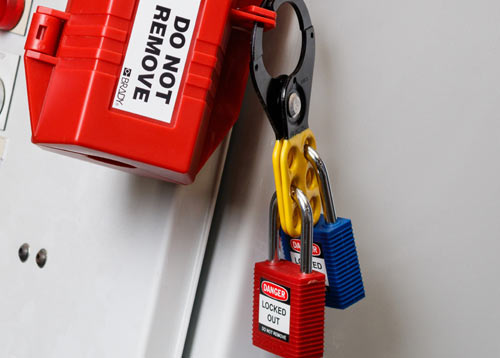
Individual lockout tagout for machine maintenance and repair is highly standardized. But what happens when you factor in a group of employees, potentially across multiple machines, departments, crafts and shift changes? The chances for accidental re-energization increase and so does the need for additional protective measures. As a result, the Occupational Safety and Health Administration (OSHA) requires greater coordination and communication for group lockout tagout, specifically 1910.147(f)(3).[1] Here, we’ll explore specific aspects of the standard as it relates to group lockout procedure and policy as well as common challenges, best practices and devices for an effective group lockout box procedure.
Approximately 3,000,000 workers service equipment in the United States across all manners of machinery and equipment, potentially putting themselves in the way of the accidental release of stored-energy sources. Control of Hazardous Energy, Lockout/Tagout (29CFR 1910.147) addresses the practices and procedures necessary to prevent this by disabling machinery or equipment during servicing and maintenance activities. As such, it’s consistently in OSHA’s top 10 most cited categories. In 2018 and 2019, it ranked 4th, and in 2020, it ranked 6th with 2,065 total violations.[2] While burdensome at times, the regulation does help to prevent accidents and injuries. According to a study, the 1910.147 standard is estimated to prevent 50,000 injuries and 120 fatalities on an annual basis.[3]
Section 1910.147(f)(3) contains the specific details of group lockout procedure and policy, including circumstances and responsibilities.[1] Group lockout covers locking out a machine, equipment or system when any of the following conditions are met:
When in a group lockout scenario, the following measures should be taken:
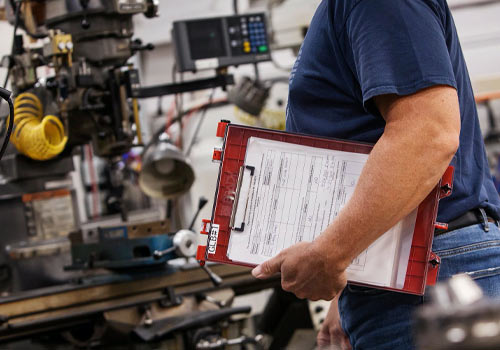
For more general information on the standard, see lockout tagout FAQs.
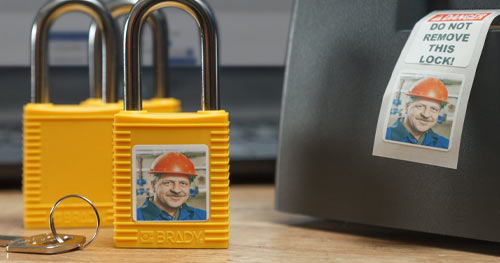
No matter how brief or simple an action may seem, when workers service equipment under the locks of others, they’re operating under a false sense of security. In reality, they have ceded any control as to how or when the equipment could be re-energized. OSHA’s “one person, one lock, one key” guidance exists for a reason. Yet, every year, companies are cited in violation of it. Each employee working on a piece of machinery must apply his/her own lock only to ensure an OSHA-compliant lockout tagout program.
Not having the proper lockout locks, tags and devices on hand wastes time, resources and puts workers at risk by encouraging lack of execution and follow-through. Teams should be prepared for lockout situations through procedure reviews, hands-on testing and training and having the necessary devices on hand. When it comes to locking out, a best practice is to always use a hasp and to never use the last lock position without adding an additional hasp or implementing a group lockbox instead.
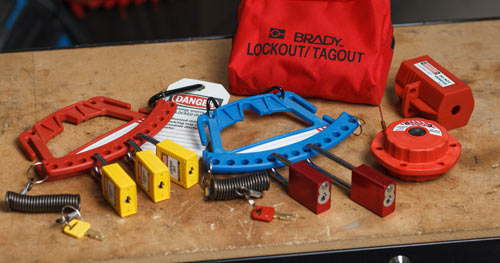
Coordination is key when it comes to group lockout, and that’s why 1910.147(f)(3)(ii)(C) specifically outlines the need for a principal authorized employee.1 Clear display and access to lockout procedures helps with this common pitfall, including the use of group lock boxes, sign-in / sign-out sheets and more. Shift supervisors and / or maintenance leads should walk the facility floor every day to ensure things are in order and discover any potential action items.
There are separate procedures to be followed for removing abandoned locks, and they are a recipe for lost time and more risk for workers. One simple way to avoid this pitfall is making it a standard best practice that everyone removes locks at the end of their shift.
Make your written program company- and site-specific, aligned with operational practices, inclusive of the required elements and accepted, understood and followed by the workforce. Specifically, your written program should include:
OSHA requires the written group lockout tagout procedures to be inspected at least annually under 1910.147(c)(6)(i).[1] As part of your standardization, it’s a best practice to set a recurring date for inspection – possibly at a time when production may be at a low point for a seasonal business, after regular kaizen events or following a move of machinery and equipment. That way, your teams can plan for the same timing every year.
The Brady Safety Services team helps groups of all sizes at any stage in their lockout tagout compliance journey, including group lockout tagout.
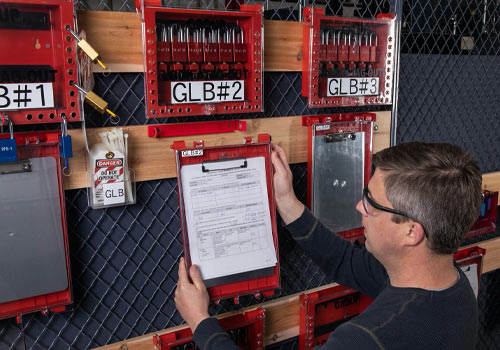
Ensure padlocks, devices and tags are durable, substantial, standardized, identifiable and exclusively for the control of hazardous energy. With the right padlock solution as part of a group lockout tagout system, you’ll be able to:
Brady SafeKey lockout tagout padlocks offer greater precision and control for your program through color-matched key and lock body, smooth key insertion, added key safety, improved durability and more.
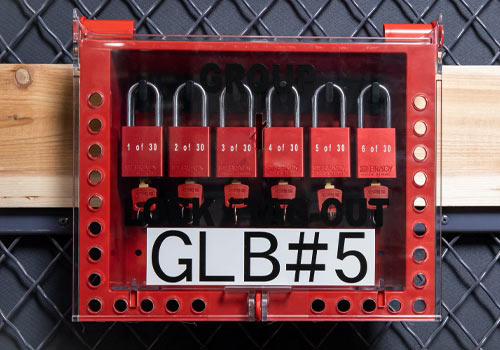
Start by performing a scope of work. This may include any needs for temporary protective grounds, testing or positioning, as well as whether the entire lockout falls under one procedure, is sequential or requires back-locking.
Then, a job safety analysis (JSA) will help identify physical requirements, environmental conditions and safety factors at each step, and help you identify any need to secure permits.
Finally, always ensure the shutdown / restart process is well-documented, and a lockout procedure has been requested, developed, reviewed and approved.
Ensure employees have the information they need, when they need it, to perform work as safely and quickly as possible. This includes labeling isolation points, implementing sign-on / sign-off forms, and documenting lock box locations, lockout tagout procedures and checklists, JSA forms and permit forms.
Brady LINK360 software is a unique combination of apps and products that helps you create identification solutions, including visual lockout procedures, forms and more. It even links to a barcode so a maintenance person can scan, perform the lockout or inspection steps and allow a supervisor to see if it’s been completed properly.
Labels, colors and clear communication are all key to managing multiple workers across shift changes. Specifically, you should:
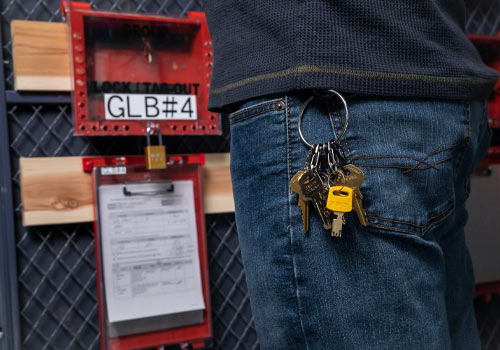
Multi-lock hasps are an easy and effective way to allow multiple workers to lock on and effectively lock out energy isolation points. All authorized employees attach their personal locks to a multi-lock hasp in the closed position and leave them there for the duration of their work. No one is able to remove the hasp and re-energize the energy isolation device until the last worker has removed their personal lock from the hasp.
For a group lockout box procedure, the lockout coordinator, or primary authorized employee, places primary isolation locks on every energy isolation device and places the keys inside a group lock box. After the lockout coordinator applies his or her personal lock to the group lock box, authorized workers lock onto the group lock box with their personal locks. The isolation lock keys stay locked inside the group lock box until the last worker has removed his or her personal lock from the group lock box and the lockout coordinator removes his or her lock last. Permit control stations provide a more comprehensive solution and are a group lockout best practice to keep devices and information together.
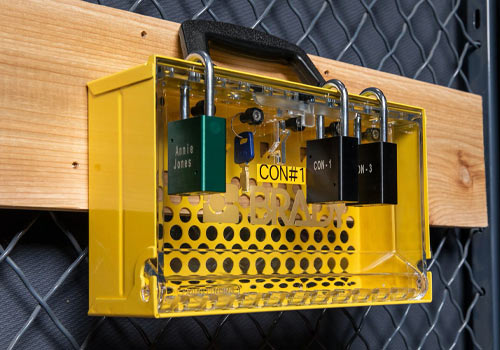
Hasps and individual locks get the job done, but they eventually burden staff time and strain efficiency. As the number of isolation points goes up, the ability of a group lock box to save time does, too. For example, it’s possible, but not ideal, for 5 people to lock onto 12 isolation points, or 60 lock-ons, when 12 isolation point locks and just 5 locks on a group lock box could be used. So, generally, as isolation points rise, so does the utility of a group lock box.
Discover Brady’s full lineup of lockout padlocks designed to help you protect workers, workflows and costs as part of an OSHA-compliant program. Not sure which safety padlock is right for you? See our 6 considerations when selecting safety padlocks
Allow multiple authorized workers to lock onto an energy isolation point with durable, secure, nonconductive options
Durable and substantial, ready to handle your large, complex jobs
Best practice to keep documentation and devices together, protected, visible and accessible
From-scratch procedure writing, training for authorized and affected employees, and more
References